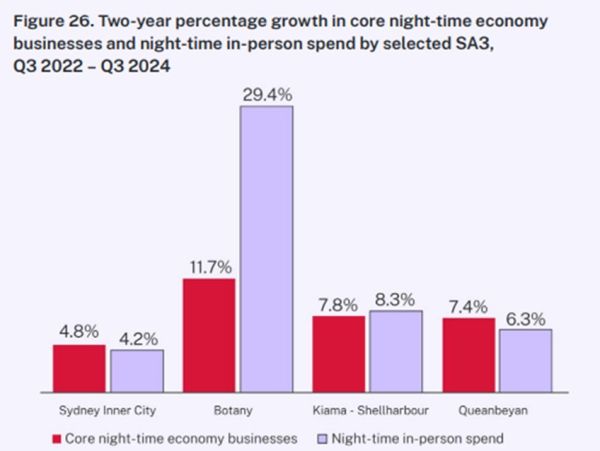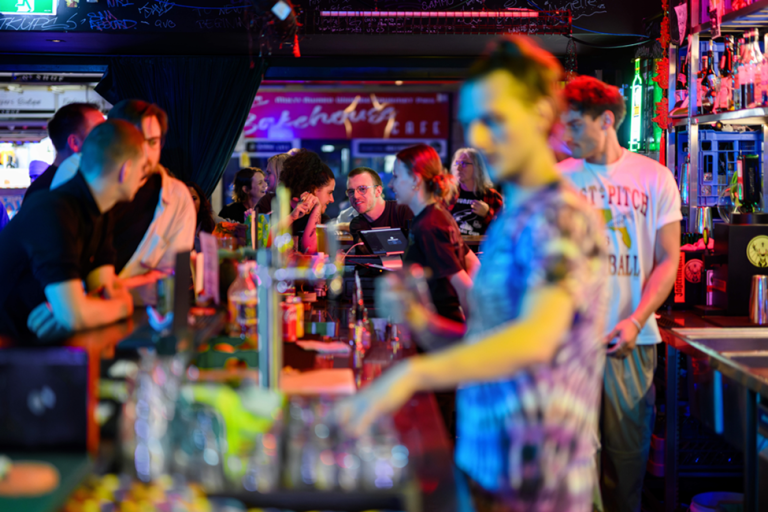The red glow of the Coca-Cola sign in King's Cross has long been perceived as the heart of Sydney's nightlife. Likewise, Barangaroo, Darlinghurst, Potts Point, Surry Hills and Woolloomooloo have been part and parcel of the going-out experience for most Sydneysiders and visitors. But now, things are beginning to change.
Insights from our Data After Dark platform reveal a clear shift in nightlife activities is underway; in particular, the going-out experience in NSW is decentralising.
Going west
As the heat map below shows, Blacktown-North, Bringelly-Green Valley and St Mary’s enjoyed two-year growth rates in their night-time economies exceeding 20 percent—more than four times the growth rate of Sydney’s Inner City.

When asked why areas like Parramatta are outpacing inner-city counterparts in night-time economy growth, City of Parramatta Lord Mayor Cr Martin Zaiter pointed to the city’s ambitious vision and supportive policies.
“It’s no surprise that night-time business growth in Parramatta has increased by 14%,” Cr Zaiter said.
“Late night trading businesses are a crucial part of our economy and provide the community with food and beverages, cultural activities, live music, entertainment and sporting events.
“It’s why council developed late night trading development controls – to send a signal to all businesses that if you want to be a part of a growing night-time economy, then Parramatta is the place to be.”
It’s not just the suburbs getting busier, either. This shift in going-out behaviour — away from densely populated areas and toward more regional ones — is also happening in other areas across the state. For example, Canberra and Wollongong are seeing slower growth in their night-time activity levels when compared with less populated areas nearby like Kiama-Shellharbour and Queanbeyan.

“We want people to get people off the couch and go out at night. This data shows that people don’t have to travel too far to find a great night out, regardless of where they live in NSW,” said NSW 24-Hour Economy Commissioner, Michael Rodrigues.
“From live performance to experiences like digital and arcade games, bowling and art shows, there are so many great offerings across NSW. We hope to see continued growth in the sector to support the unique night-time economies across the state.”
What’s driving the shift?
So, are people simply sick of the city? Or are there other factors driving the shift away from CBDs at night? According to our data, there are a few factors at play:
- Infrastructure investments (hello, new international airport coming in 2026!).
- Deliberate policies to boost local nightlife.
- Cost of living is prompting more local activities, in part due to a desire to spend less on travel.
Why it matters
This growth isn’t just good news for western and south-western Sydney businesses—it represents a broader shift in how and where people experience all of NSW after dark. More local nightlife options mean stronger communities, reduced travel times and a more vibrant, connected city.
Want to dive deeper into the numbers and see where the action is happening? Read the full Night-time Economy September Quarter Report to learn more.
Be the first to hear news from the Office of the 24-hour Economy Commissioner on available grants, initiatives, and programs – subscribe to our newsletter.
